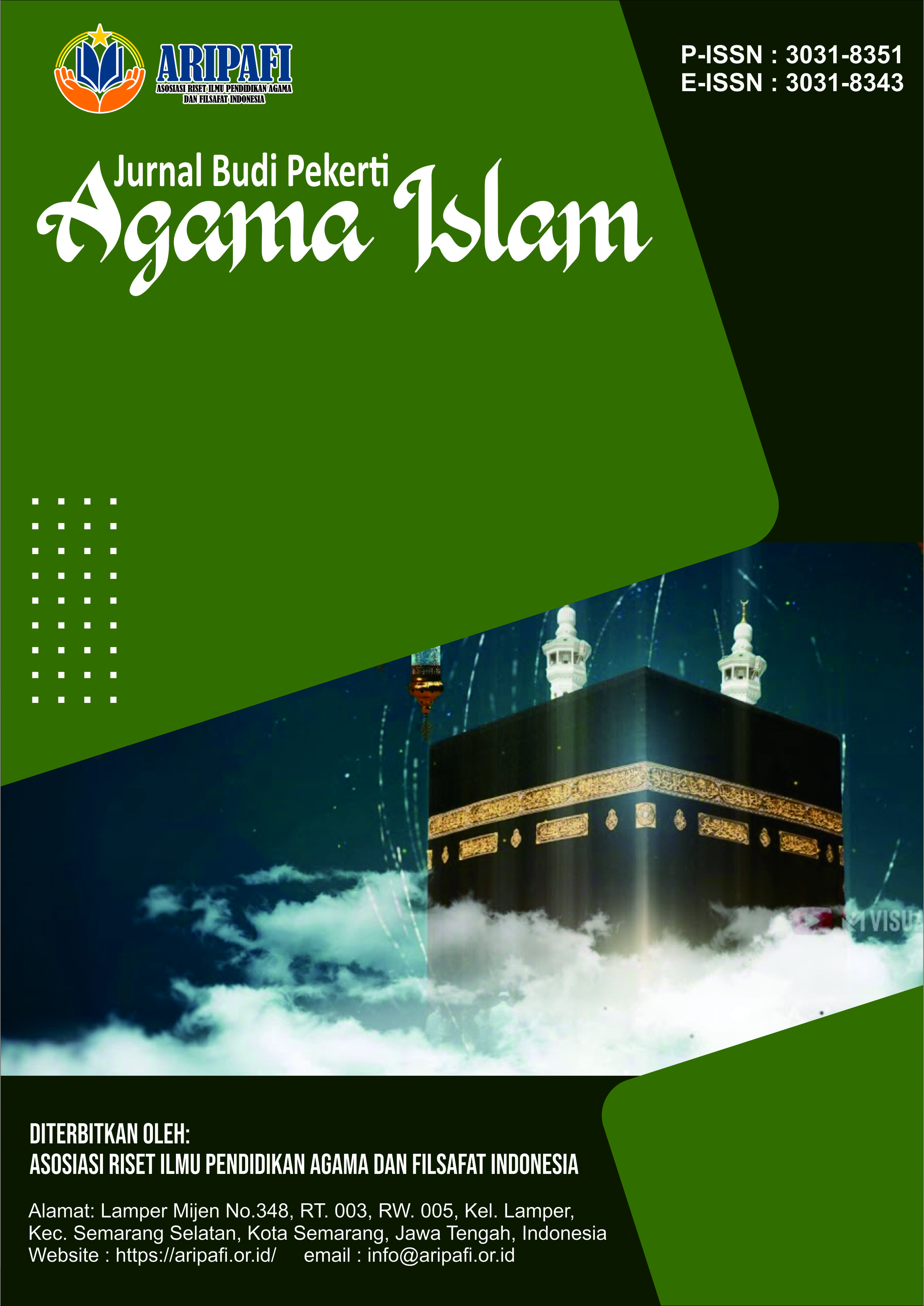Penciptaan Manusia dalam Al-Qur’an dan Ilmu Embriologi: Tafsir Ilmi
DOI:
https://doi.org/10.61132/jbpai.v3i3.1322Keywords:
Human Creation, Comparative, InterpretationAbstract
The Qur’an contains a wealth of information and regulations regarding the Essence and purpose of the creation of the universe, including the process of human Creation. It describes several stages of human development starting from the prenatal Phase, namely the nutfah (sperm drop), alaqah (a clinging clot), mudghah (a chewed-like Lump of flesh), izam (formation of bones), and khalqan akhar (the formation of a complete Human being). In interpreting these stages, Ar-Razi applies a philosophical approach, while Hamka employs a scientific approach in their interpretations of Surah al-Mu’minun verses 12-14. The main issue explored in this study is how the two exegetes interpret Qur’an Surah al-Mu’minun verses 12-14 concerning the process of human creation. This research Is qualitative, employing a library research approach and a comparative method between Mafatih al-Ghayb and Tafsir al-Azhar. Data collection is conducted through Documentation techniques, which involve gathering relevant written or recorded Documents. The findings conclude that although both scholars present similar theories, They adopt different approaches. Ar-Razi interprets these verses as referring to the creation Of Prophet Adam and his descendants, whereas Hamka interprets them as describing the general process of human creation (the offspring of Adam).
Downloads
References
Akhyar, M. (2024). Studi analisis tafsir al-Qur’an dan relevansinya dalam pendidikan Islam. Jurnal Dialogis Ilmu Ushuluddin, 10(1).
Aripin, I. T. (2023). Paradigma tafsir ilm dalam perspektif mufassir klasik dan modern. Jurnal Dialogis Ilmu Ushuluddin, 2(1).
Asfar, K. (2019). Konsep jiwa perspektif al-Qur’an. Jurnal Dialogis Ilmu Ushuluddin, 4(2).
Atiqoh, S., & Maunah, B. (n.d.). Hakikat manusia sebagai makhluk yang perlu dan dapat dididik. Jurnal Dialogis Ilmu Ushuluddin, 2(1).
Hasanudin, M. (2018). Konsep embrio manusia perspektif al-Qur’an dan sains. Jurnal Dialogis Ilmu Ushuluddin, 2(1).
Irfan, R. (2024). Analisis metode pendidikan Islam dalam al-Qur’an: Kajian QS. Hud ayat 61. Jurnal Dialogis Ilmu Ushuluddin, 6(8).
Karmana, I. W. (n.d.). Analisis teori Darwin ditinjau dari konsep waktu. Jurnal Dialogis Ilmu Ushuluddin, 3(4).
Melati, S., & Arifin, Z. (2024). Teori pemahaman Alquran beserta penafsirannya. Jurnal Dialogis Ilmu Ushuluddin, 1(1).
Muhammad, M. T. (2016). Kualitas manusia dalam pandangan al-Qur’an. Jurnal Dialogis Ilmu Ushuluddin, 13(1).
Muhammad, M., & Sonjaya, A. S. (2024). Tafsir ilmi tentang penciptaan manusia dalam tafsir Al-Jawahir karya Thanthawi Jauhari. Jurnal Dialogis Ilmu Ushuluddin, 7(1).
Ramadhani, A. (2022). Al-Qur’an dan perkembangan ilmu pengetahuan. Jurnal Dialogis Ilmu Ushuluddin, 2(1).
Sam, R., Amalina, R., & Purnama, N. K. (2022). Proses terciptanya manusia di alam rahim dalam perspektif sains dan al-Qur’an. Jurnal Dialogis Ilmu Ushuluddin, 12(1).
Sari, R. D. T. (2021). Fase perkembangan embrio dalam perspektif embriologi dan al-Qur’an: Tafsir ilmi QS. Al-Mu’minun ayat 12–14. Jurnal Dialogis Ilmu Ushuluddin, 5(2).
Shofiatul, R. (n.d.). Konsep penciptaan jasmani dan rohani menurut al-Qur’an dan hadis. Jurnal Dialogis Ilmu Ushuluddin, 2(1).
Syukri, M. (2024). Program doktoral UIN Ar-Raniry, Banda Aceh. Filsafat Ilmu dan Pengembangan Metodologi Penelitian Ilmiah, 4(2).
Yulizar, M. A. (2019). Bentuk penciptaan manusia dari tanah menurut al-Qur’an (kajian mutaradif ayat). Jurnal Dialogis Ilmu Ushuluddin, 9(2).
Yusuf, A. (n.d.). Dimensi pendidikan Islam dalam perspektif QS surat As-Sajdah ayat 7–9. Jurnal Dialogis Ilmu Ushuluddin.
Downloads
Published
How to Cite
Issue
Section
License
Copyright (c) 2025 Jurnal Budi Pekerti Agama Islam

This work is licensed under a Creative Commons Attribution-ShareAlike 4.0 International License.





